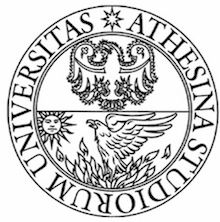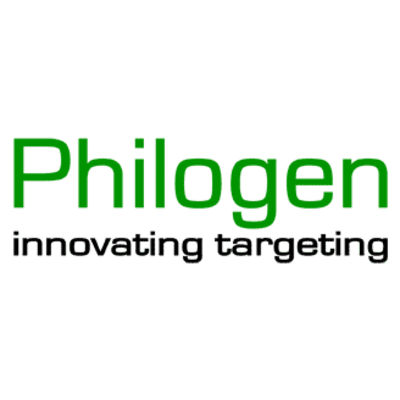Request Demo
Last update 08 May 2025
EDA-FN
Last update 08 May 2025
Basic Info
Synonyms- |
Introduction- |
Related
4
Drugs associated with EDA-FNTarget |
Mechanism EDA-FN inhibitors [+1] |
Active Org. |
Originator Org. |
Active Indication |
Inactive Indication- |
Drug Highest PhasePreclinical |
First Approval Ctry. / Loc.- |
First Approval Date20 Jan 1800 |
Target |
Mechanism EDA-FN inhibitors [+1] |
Active Org. |
Originator Org. |
Active Indication |
Inactive Indication- |
Drug Highest PhasePreclinical |
First Approval Ctry. / Loc.- |
First Approval Date20 Jan 1800 |
Target |
Mechanism EDA-FN inhibitors [+1] |
Active Org.- |
Originator Org. |
Active Indication- |
Inactive Indication |
Drug Highest PhaseDiscontinued |
First Approval Ctry. / Loc.- |
First Approval Date20 Jan 1800 |
8
Clinical Trials associated with EDA-FNNCT05622175
A Dose-finding Phase I Study of F8IL10 Intra-articular Treatment in Rheumatoid Arthritis
This multicenter, prospective Phase I study is aimed at testing the safety of F8IL10 via i.a. administration once every 4 weeks over 8 weeks in patients with RA who, despite treatment with stable doses (at least 3 months) of DMARDs (conventional, biologic and/or targeted synthetic), present arthritis flare(s) suitable for i.a. injections.
Start Date31 Mar 2023 |
Sponsor / Collaborator |
NCT03414788
PHASE 1B, OPEN LABEL STUDY TO CHARACTERIZE THE DISTRIBUTION OF A SINGLE INTRAVENOUS DOSE OF [124I]-IODOBENZOYL (IB)-PF-06687234 WITH CONCURRENT ADMINISTRATION OF NON-RADIOLABELED PF-06687234 AS ASSESSED WITH POSITRON EMISSION TOMOGRAPHY AND COMPUTED TOMOGRAPHY (PET-CT) IMAGING IN MODERATE TO SEVERE ULCERATIVE AND CROHN'S COLITIS SUBJECTS
The purpose of the study is to evaluate the PK, safety and tolerability of PF-06687234 and [124I]IB-PF-06687234 (simultaneously given) in subjects with moderate to severe Ulcerative Colitis or Crohn's Disease. The study used PET-CT scan imaging to assess the distribution of PF-06687234 and [124I]IB-PF-06687234 over 24 and 72 hours in colon (inflamed and non-inflamed), plasma, colon, liver, spleen, kidney and small intestine.
Start Date07 Dec 2020 |
Sponsor / Collaborator |
NCT03269695
A PHASE 2A, RANDOMIZED, DOUBLE-BLIND, PLACEBO-CONTROLLED STUDY TO EVALUATE THE EFFICACY, SAFETY, TOLERABILITY AND PHARMACOKINETICS OF PF-06687234 AS ADD-ON THERAPY TO INFLIXIMAB IN ACTIVE ULCERATIVE COLITIS SUBJECTS WHO ARE NOT IN REMISSION (BUILD UC)
The purpose of this study is to determine if PF-06687234 is effective and safe as add-on therapy to infliximab in subjects with active ulcerative colitis who are not in remission.
Start Date20 Dec 2017 |
Sponsor / Collaborator |
100 Clinical Results associated with EDA-FN
Login to view more data
100 Translational Medicine associated with EDA-FN
Login to view more data
0 Patents (Medical) associated with EDA-FN
Login to view more data
168
Literatures (Medical) associated with EDA-FN14 Apr 2025·ACS Biomaterials Science & Engineering
EDA Fibronectin Microarchitecture and YAP Translocation during Wound Closure
Article
Author: Patten, Jennifer ; Bonadio, Jacob D. ; Bashiri, Ghazal ; Wang, Karin ; Halligan, Patrick ; Kegel, Michael
24 Mar 2025·Investigative Ophthalmology & Visual Science
Fibrosis-Related Gene and Protein Expression in Normal and Glaucomatous Trabecular Meshwork Cells
Article
Author: Faralli, Jennifer A. ; Keller, Kate E. ; Holden, Paul ; Yang, Yong-Feng ; Peters, Donna M. ; Sun, Ying Ying
01 Feb 2025·Biochemistry (Moscow)
Induction of Fibroblast-to-Myofibroblast Differentiation by Changing Cytoplasmic Actin Ratio
Article
Author: Levuschkina, Yulia G ; Eremin, Ilya I ; Boichuk, Sergey V ; Kopnin, Pavel B ; Dugina, Vera B ; Shagieva, Galina S ; Khromova, Natalia V
Analysis
Perform a panoramic analysis of this field.
login
or

AI Agents Built for Biopharma Breakthroughs
Accelerate discovery. Empower decisions. Transform outcomes.
Get started for free today!
Accelerate Strategic R&D decision making with Synapse, PatSnap’s AI-powered Connected Innovation Intelligence Platform Built for Life Sciences Professionals.
Start your data trial now!
Synapse data is also accessible to external entities via APIs or data packages. Empower better decisions with the latest in pharmaceutical intelligence.
Bio
Bio Sequences Search & Analysis
Sign up for free
Chemical
Chemical Structures Search & Analysis
Sign up for free



